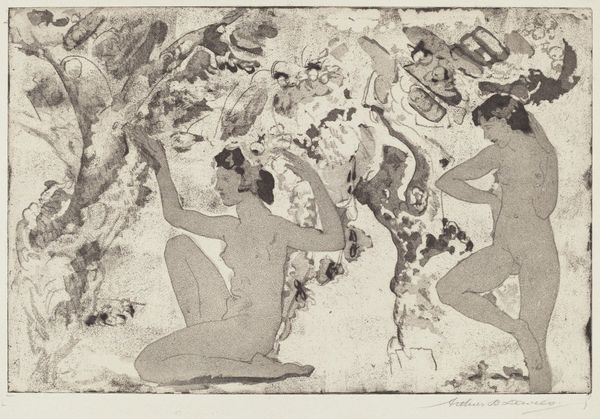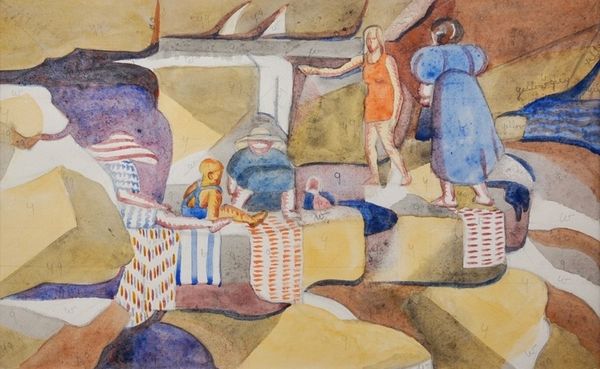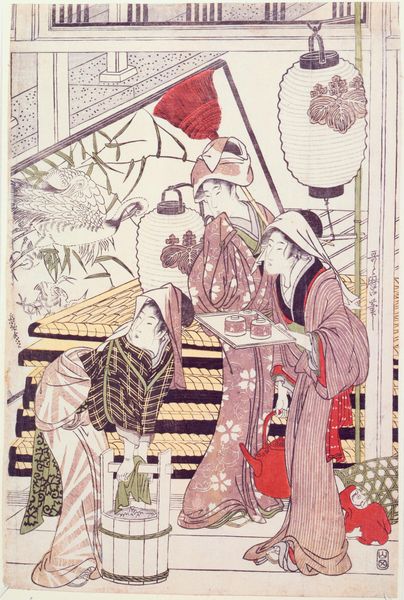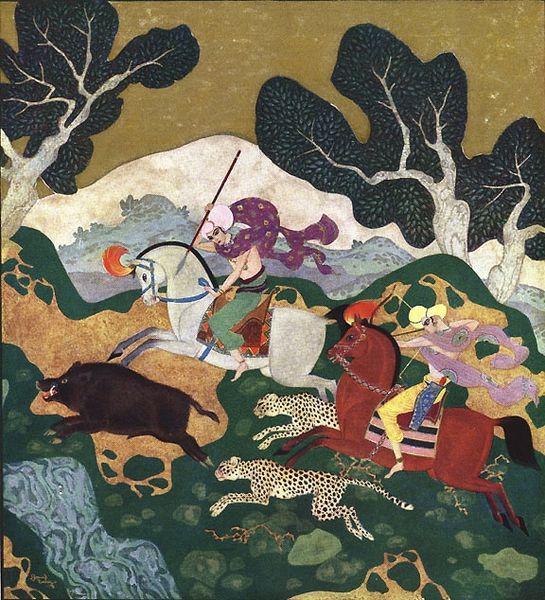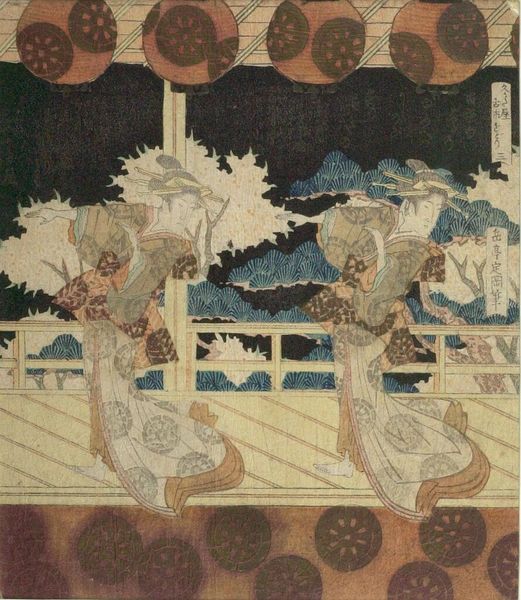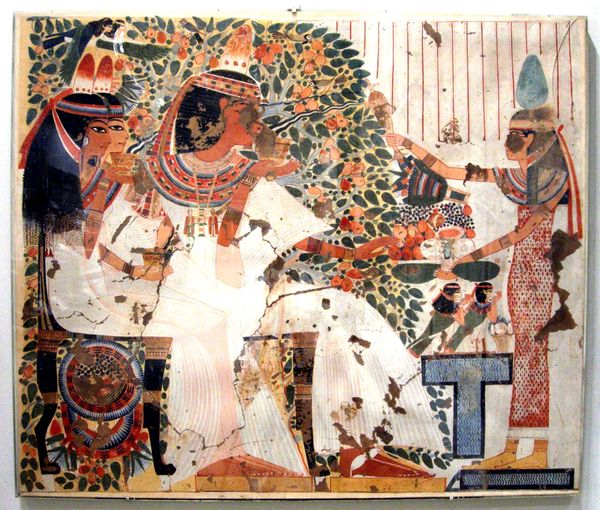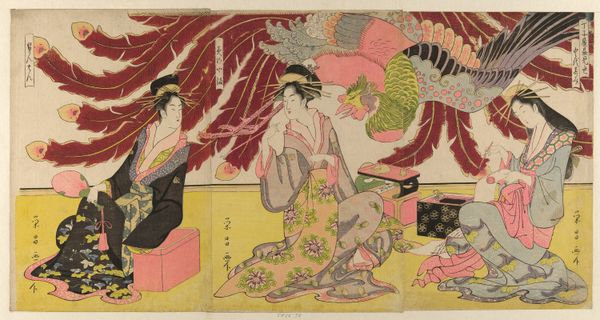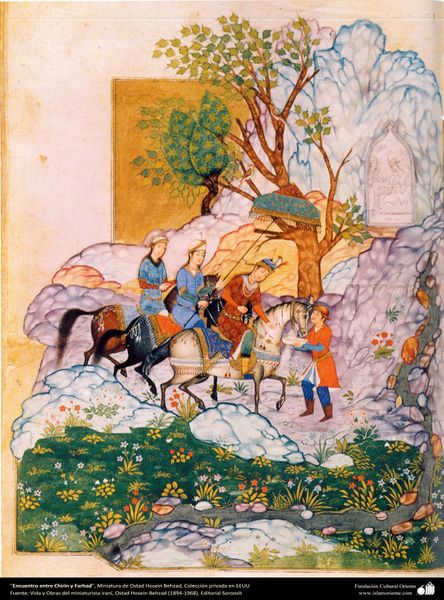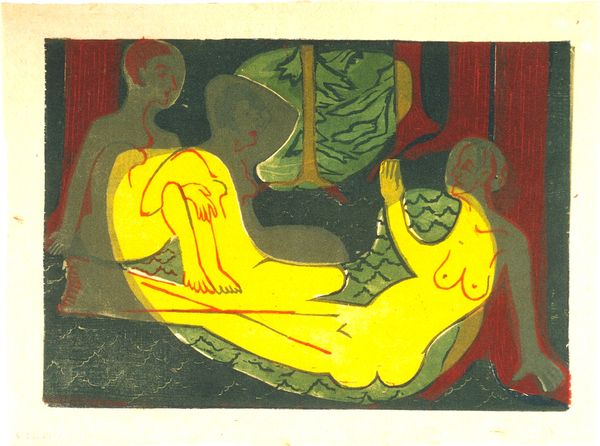
painting, watercolor
#
portrait
#
painting
#
asian-art
#
landscape
#
figuration
#
watercolor
#
watercolour illustration
#
watercolor
Copyright: Nandalal Bose,Fair Use
Editor: Here we have Nandalal Bose's "Radha's Viraha," a watercolour from 1936. It strikes me as intensely decorative, with the flattened space and repeating patterns. How do you read this piece? Curator: The composition directs our gaze immediately to the central figure, Radha. Note the deliberate placement within the rectangular bed, almost like a framed portrait within a larger one. The artist utilizes a restricted palette, primarily yellows and blues, which contributes to the work’s overall sense of balance and unity. Observe how each shade complements the others in tone and harmony. Editor: So you’re drawn to the relationships between forms and colours. I noticed the patterns and shapes but hadn’t considered how balanced they made the work feel. Curator: Exactly. Consider the palm trees above – their fan-like shapes are echoed in the lower vegetal motifs, creating a visual rhythm that stabilizes the entire image. Even the seemingly simple arrangement of the figures contributes to a cohesive design. Do you see how their postures relate to the linear geometry of the bed? Editor: I do now. The curves of their bodies contrast nicely with the sharp lines, softening the geometric frame of the bed. It’s like he is playing with a dynamic tension between order and fluidity. Curator: Precisely. And this tension enhances our appreciation for both. We are prompted to examine these qualities and reflect upon how they guide our understanding of its beauty. Editor: I see how the work's construction directly informs its meaning, independent of external context. Thank you, that was very enlightening! Curator: My pleasure. The meticulous arrangements, textures, and hues shape a contemplative experience. It exemplifies the power of formal elements in shaping artistic impact.
Comments
No comments
Be the first to comment and join the conversation on the ultimate creative platform.


